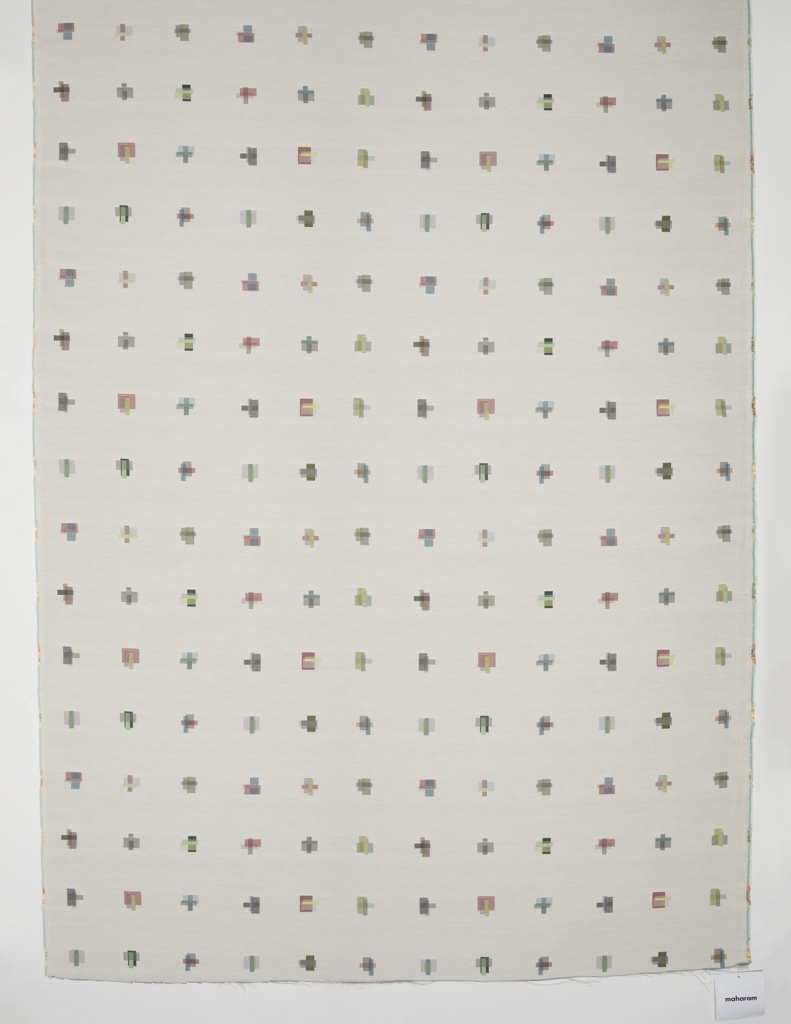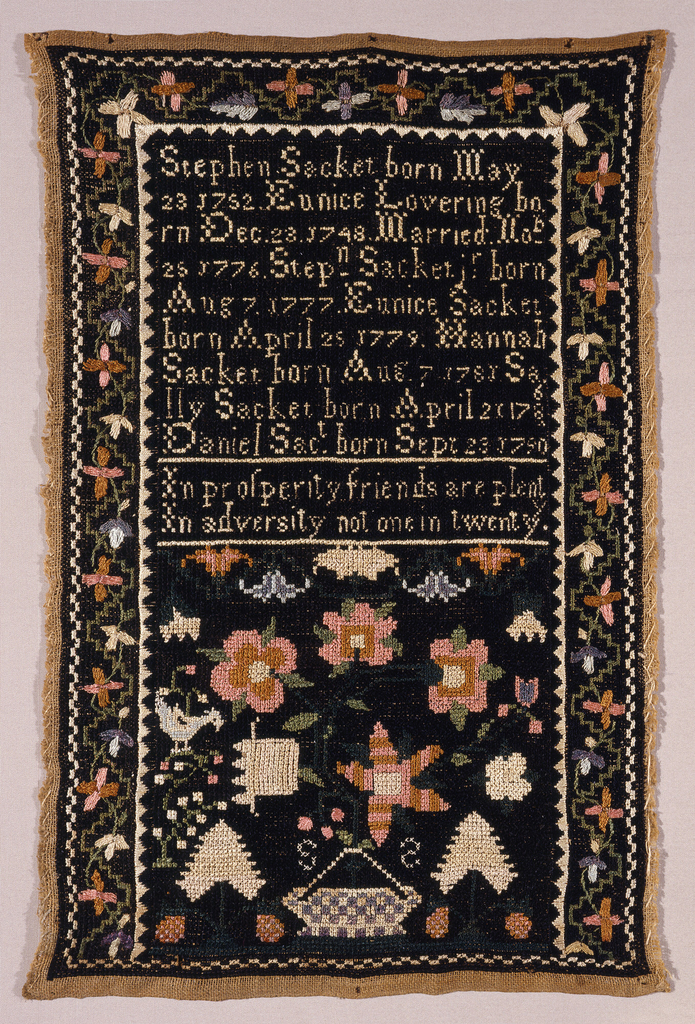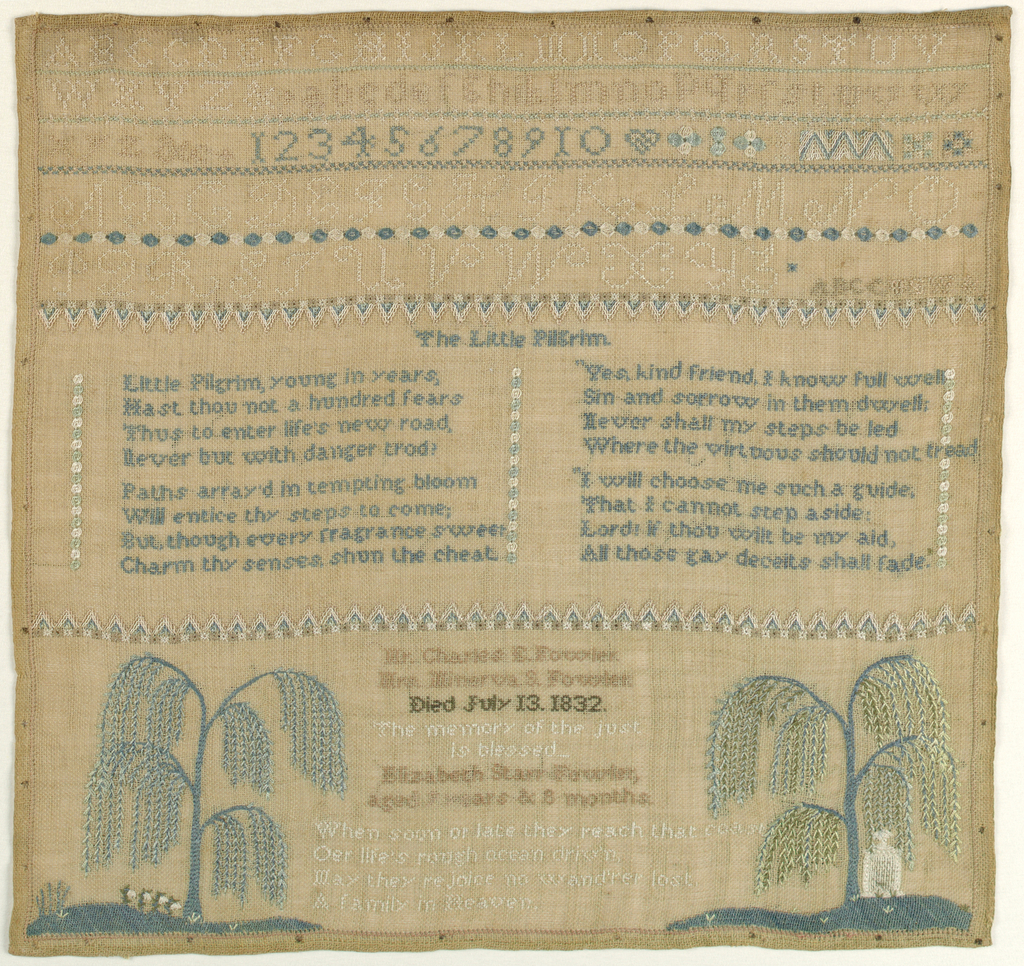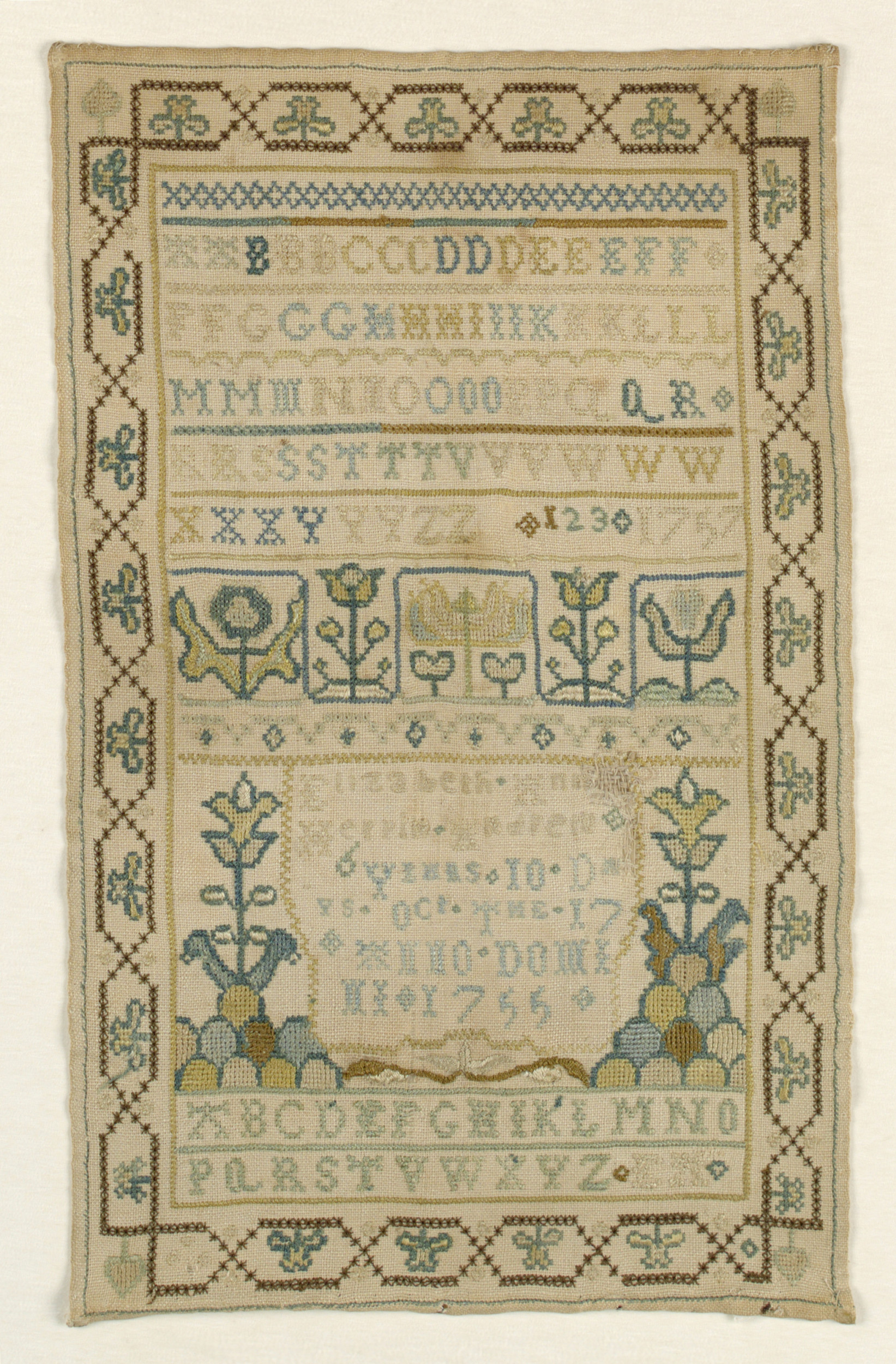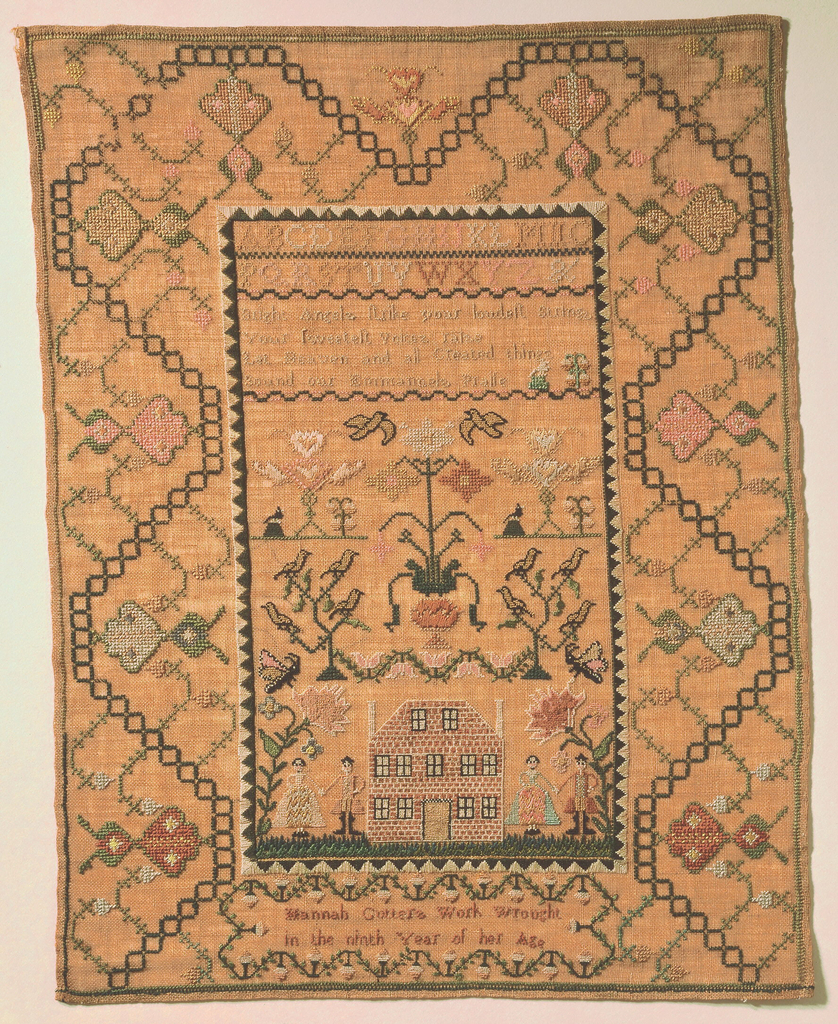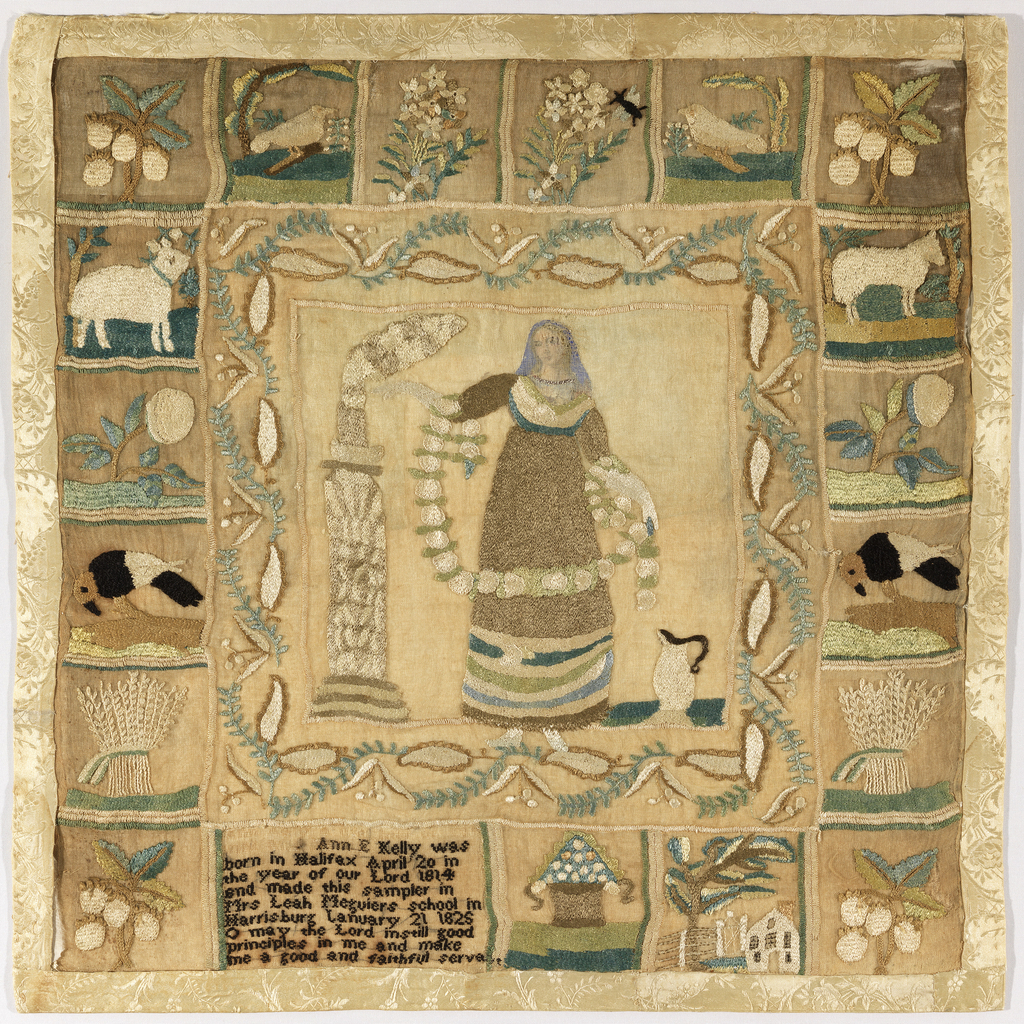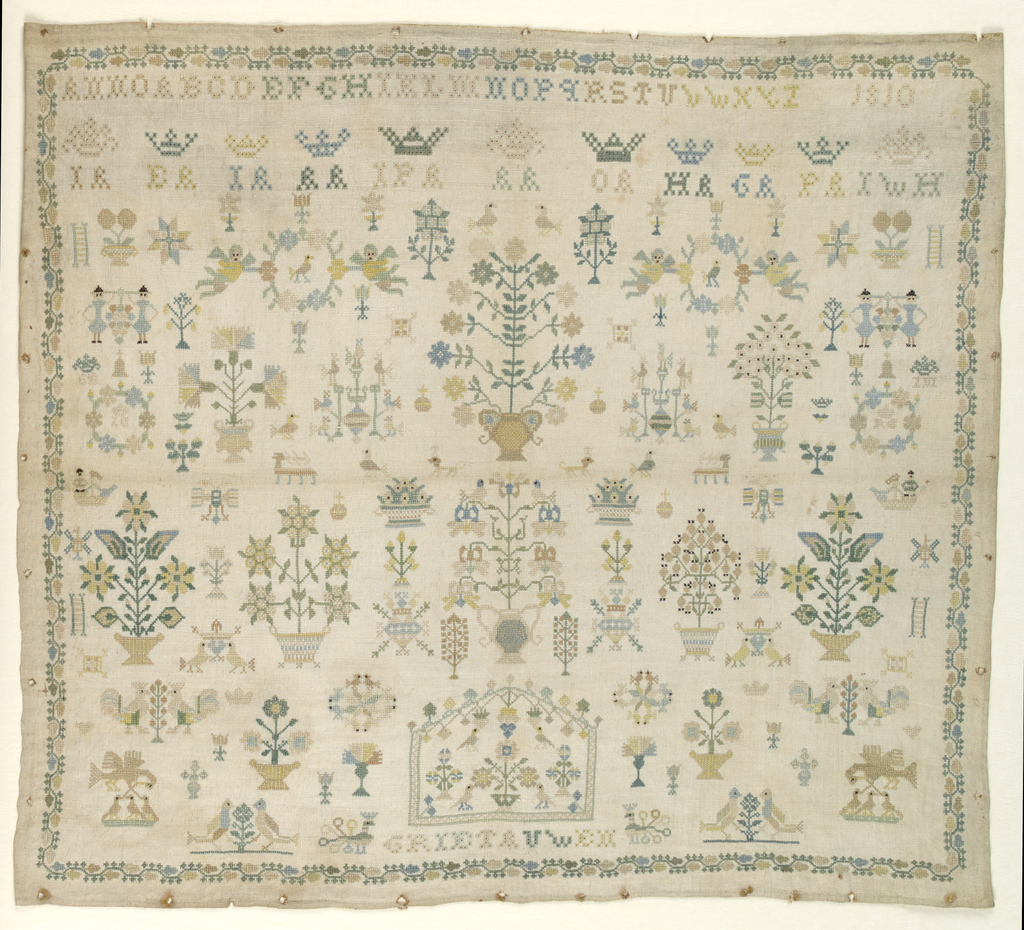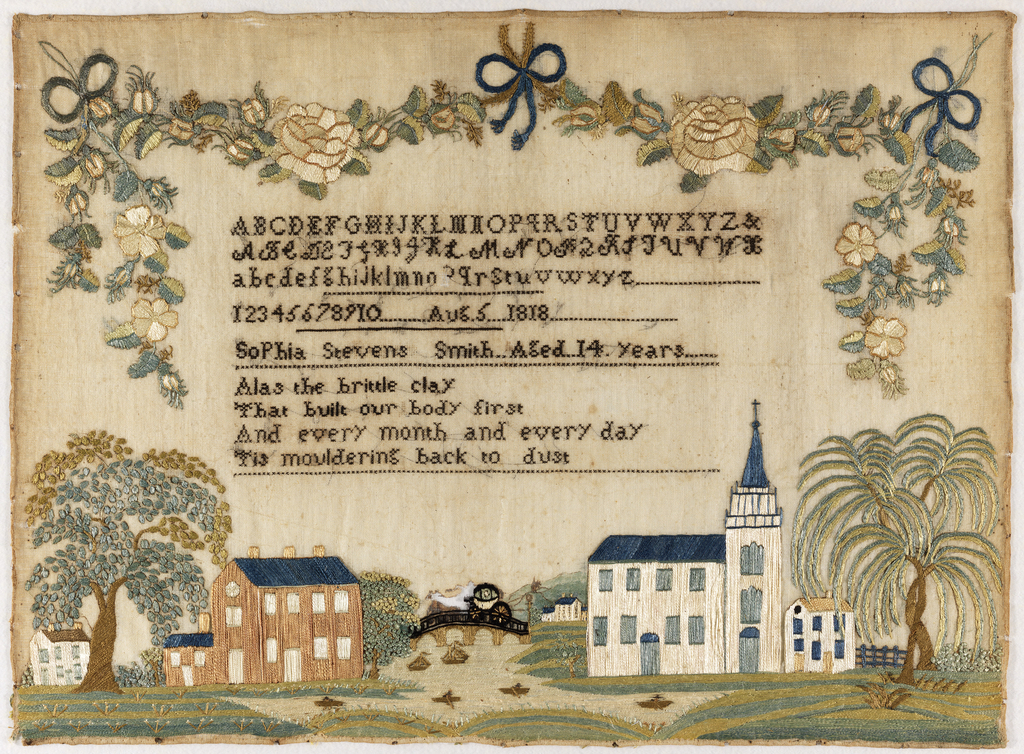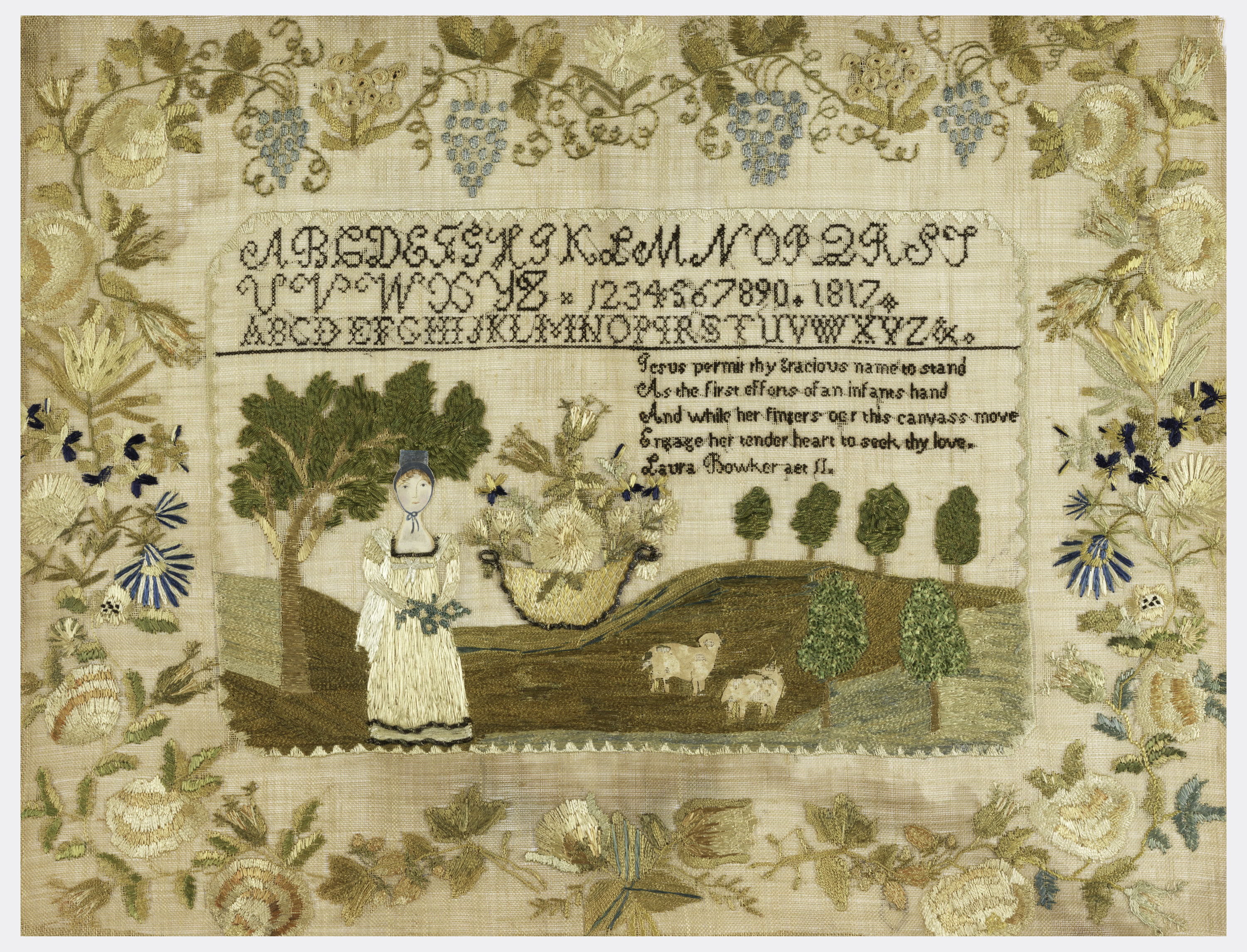Maharam’s collaborations with artists and designers over the years have produced some extraordinary textiles and wallcoverings, and according to Mary Murphy, senior vice president of design at Maharam, one of their favorite partnerships has been with Scholten & Baijings. Their love of process, sophisticated color sense, and familiarity with the making of textiles creates a...
The unstructured nature of this family register sampler, initialed “SS” and attributed to Sally Sacket (b. 1786), is typical of eighteenth-century examples. In contrast to the more organized genealogy samplers that appear after 1800, the text here is run together in continuous lines. Sally’s sampler is one of a group of three Westfield, Massachusetts, examples...
This sampler was worked by nine-year-old Elizabeth Starr Fowler (1822–1904) shortly after the death of her mother. It is unusual in that it combines elements of a traditional alphabet sampler with those of a mourning piece. At the top of the sampler are several rows of alphabets followed by a verse. The bottom section includes...
Elizabeth Ann Harpin Andrew was born on September 26, 1749, and stitched this sampler at the age of six. She ornamented her work with highly stylized floral motifs, framed with four-leaf clovers in a chain-link border. Elizabeth recorded the sampler’s completion date as October 17, 1755, and carefully calculated her age on that date as...
Hannah Cutter’s sampler is part of a large group of related examples worked from about 1790 until at least 1805 in Boston or nearby towns in Middlesex County. Typical characteristics of these samplers are deeply arcaded borders surrounding a central panel comprising an alphabet, verse, and pictorial elements framed by a saw-tooth border. The pictorial...
This sampler was worked in 1828 [or 1825] by Ann E. Kelly at the Harrisburg, Pennsylvania, school of Leah Maguire. The central scene is either biblical or classical, and was undoubtedly inspired by a yet to be identified print source. It depicts a woman holding a long garland of flowers who appears to making a...
Griet Ruwen’s sampler shows how deeply ingrained faith and religion were in daily Dutch culture in the early 19th century. Even as she practiced her needlework, Griet expressed piety and religious devotion through symbolism. Below the crowns and initials are two angels holding a wreath of roses, which represents eternity. The wreath encircles a dove,...
Sophia Smith’s sampler is part of a distinctive group of Wethersfield, Connecticut, samplers made at two different schools during the first quarter of the nineteenth century. Earlier examples were probably worked at the Abigail Goodrich School, which operated from around 1804 to 1815. Sophia’s is one of a later group of samplers, most likely made...
This sampler, made by Laura Bowker (1805-1843), is part of a small group of pictorial samplers worked by girls from Fitzwilliam, New Hampshire. Each of the charming works features a woman standing in a pastoral setting with trees, rolling hills, a pair of lambs, and an oversized basket of flowers. These bonneted ladies hold bouquets...
